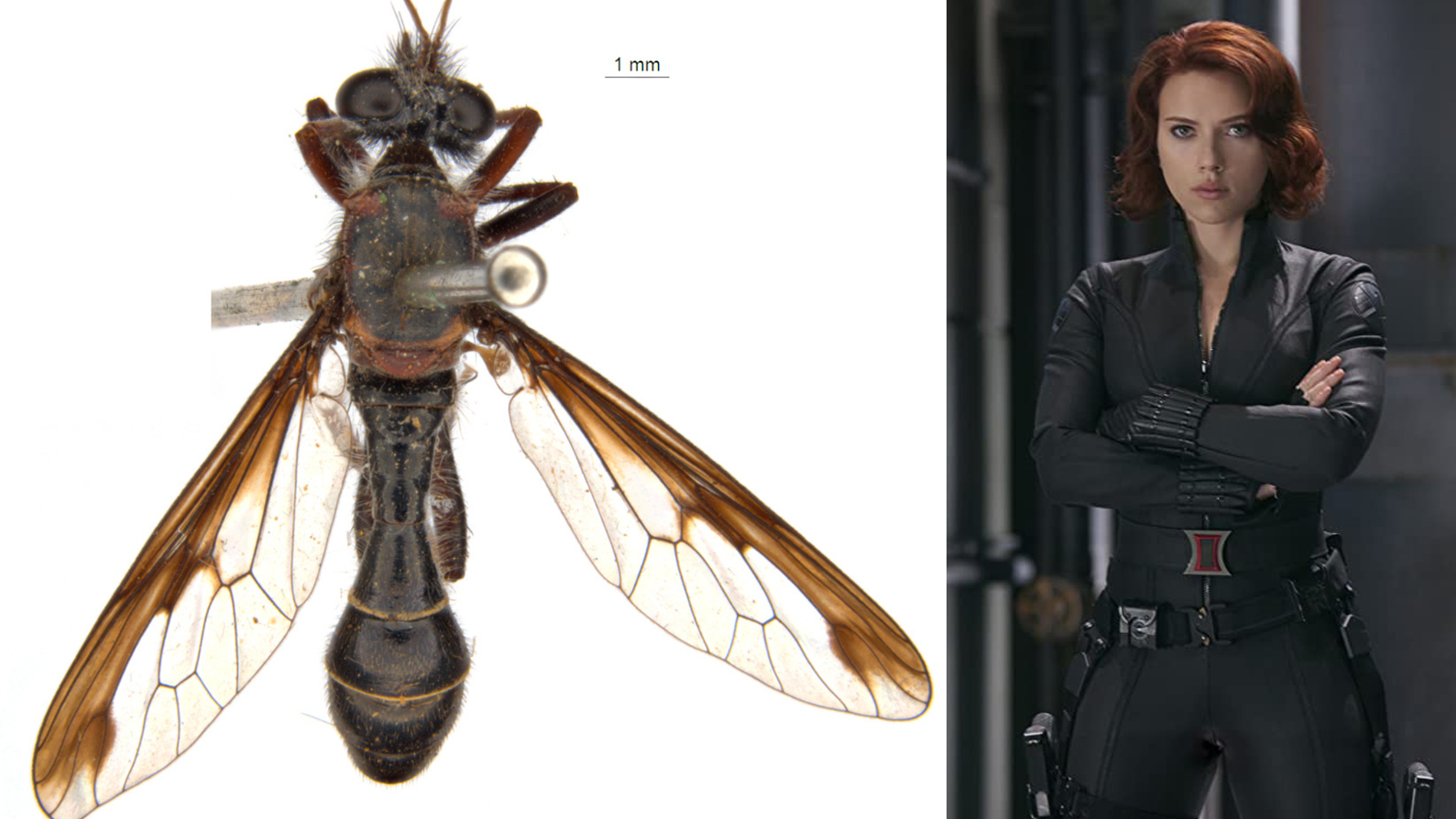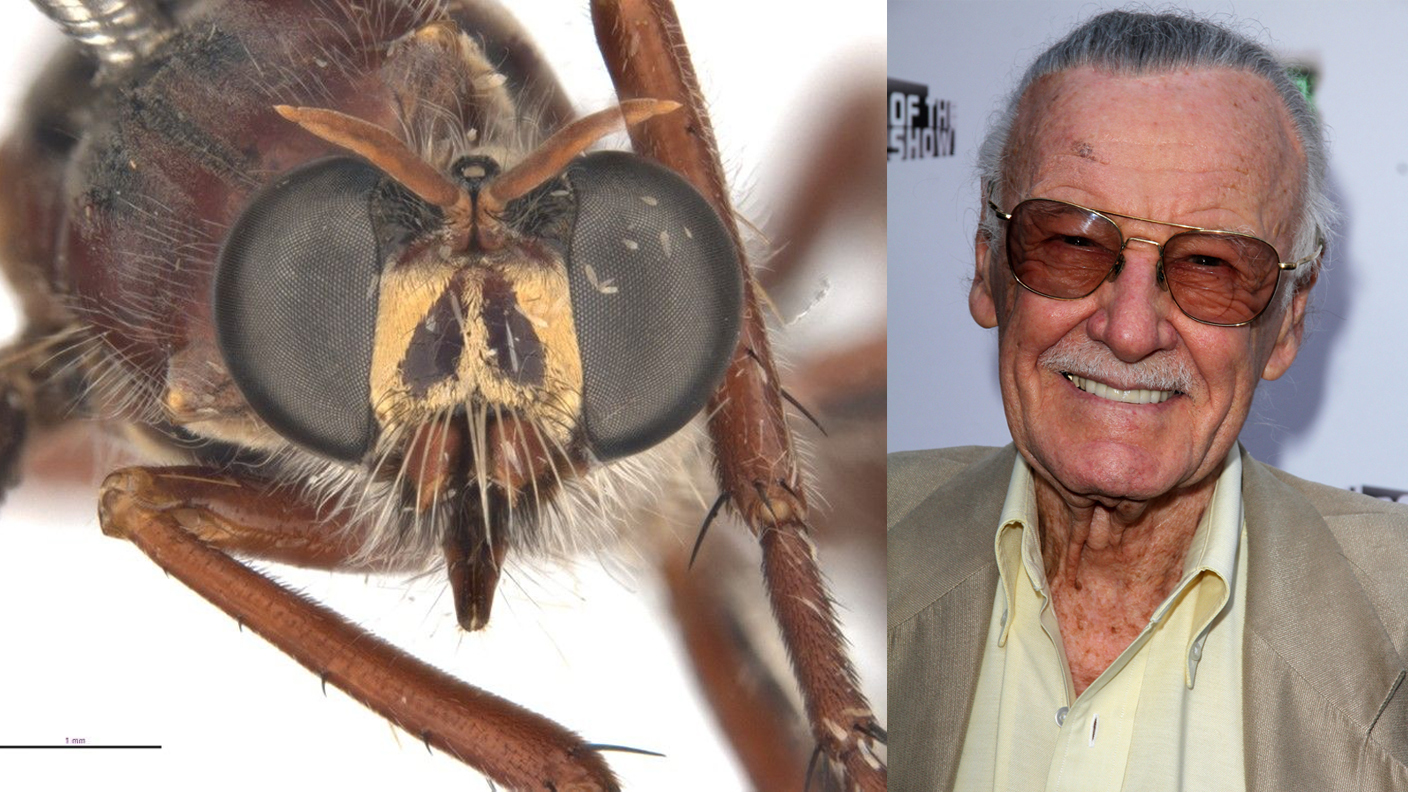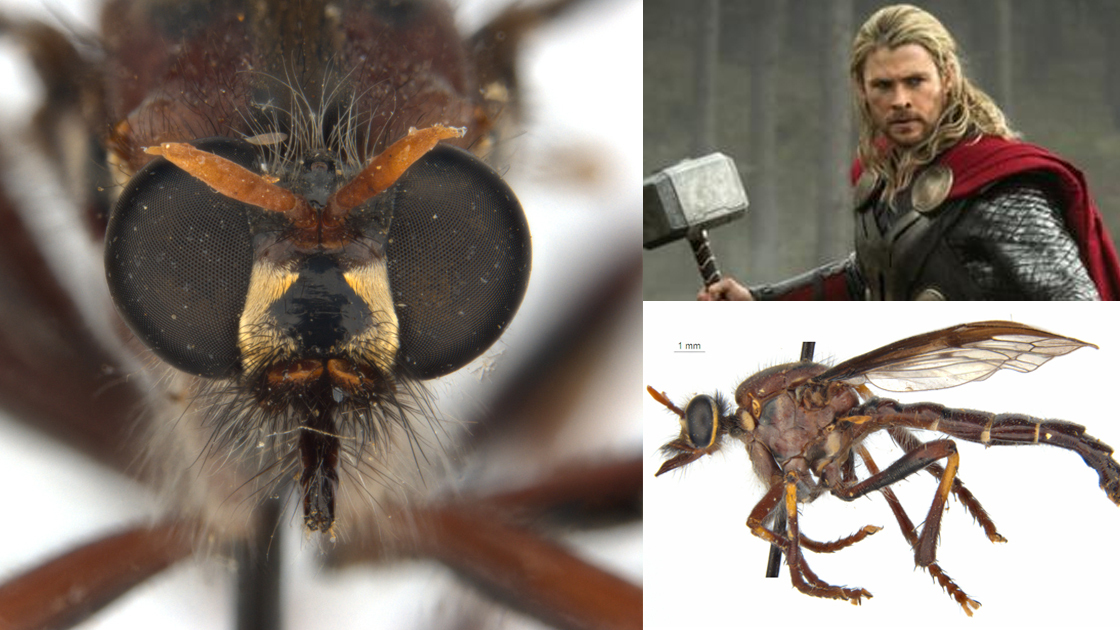Ruthless Australian 'assassin flies' named for Thor, Deadpool — and Stan Lee
These flies are hardcore killers. Why shouldn't they get killer names?

Quick: Think of the most heroic animal on Earth.
If you said "the fly" — that notoriously annoying insect that eats garbage, breeds in dung and transmits disease all over the world — then you are on the same page as the Australian biology community. Researchers at Australia's federal science agency, CSIRO, have described five previously unknown species of "assassin flies" and named them after some beloved Marvel superheroes.

The Black Widow fly

The Loki fly

The Stan Lee fly

The Thor fly
In all seriousness, these flies look awesome, and the researchers wanted to give them appropriately awesome names. One fly with red and black markings on its abdomen, for example, was named after Marvel's Deadpool, whose red-and-black mask looks virtually identical to the fly's midsection.
"We chose the name Humorolethalis sergius," CSIRO entomologist Bryan Lessard said in a statement. "It sounds like lethal humor and is derived from the Latin words humorosus, meaning wet or moist, and lethalis meaning dead."
The other newly-described flies include:
- The "Black Widow fly," Daptolestes feminategus, meaning woman wearing leather
- The "Thor fly", Daptolestes bronteflavus, meaning blond thunder
- The "Loki fly", Daptolestes illusiolautus, meaning elegant deception
- And the "Stan Lee fly," Daptolestes leei, whose black eyes and bristly white whiskers resemble the famous comic book creator.
Assassin flies (family name Asilidae) are notoriously aggressive bugs that feed primarily on other insects, often waiting in ambush before attacking their prey with neurotoxic saliva. Asilidae is a diverse family with more than 7,000 members — not unlike the Marvel cinematic universe. You can get to know all the newest members of the family in the CSIRO team's study, published July 20 in the journal Austral Entomology.
Originally published on Live Science.
Get the world’s most fascinating discoveries delivered straight to your inbox.

Brandon is the space / physics editor at Live Science. With more than 20 years of editorial experience, his writing has appeared in The Washington Post, Reader's Digest, CBS.com, the Richard Dawkins Foundation website and other outlets. He holds a bachelor's degree in creative writing from the University of Arizona, with minors in journalism and media arts. His interests include black holes, asteroids and comets, and the search for extraterrestrial life.


